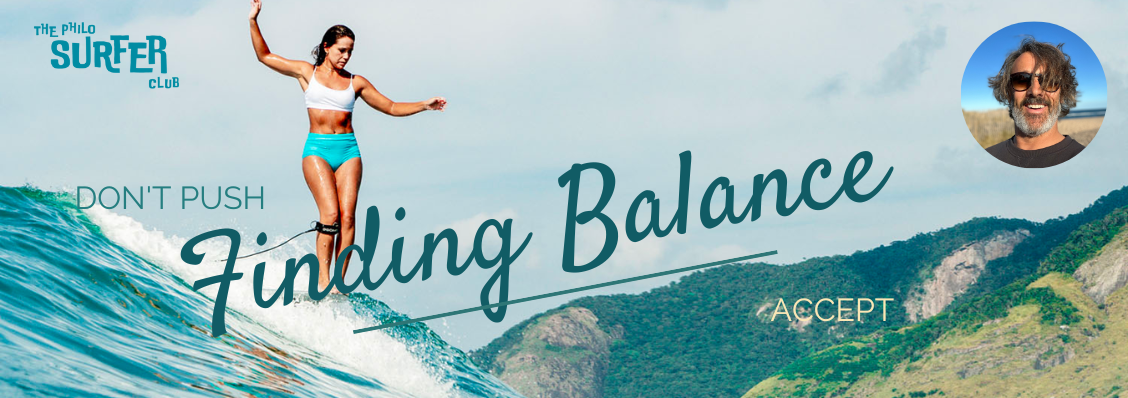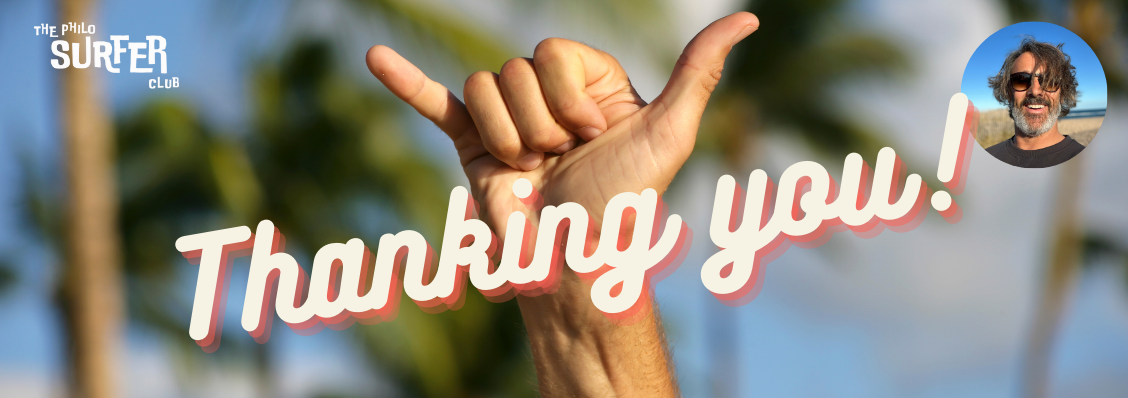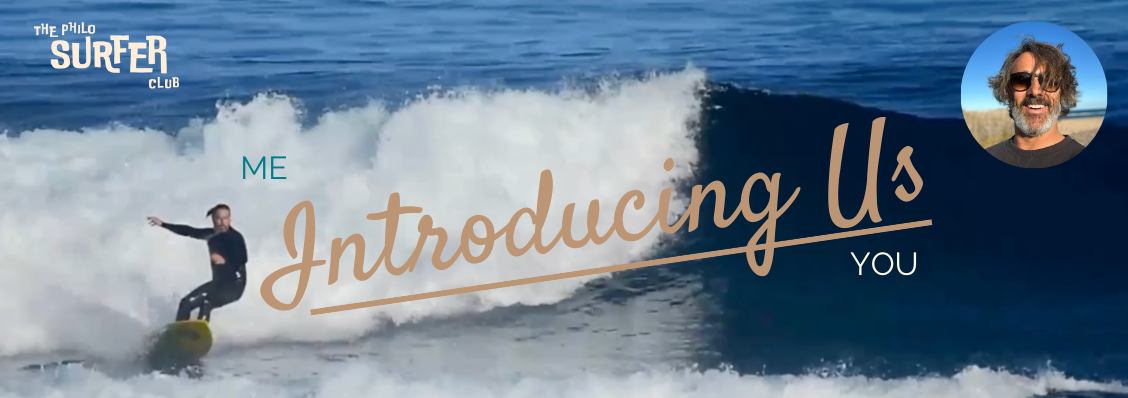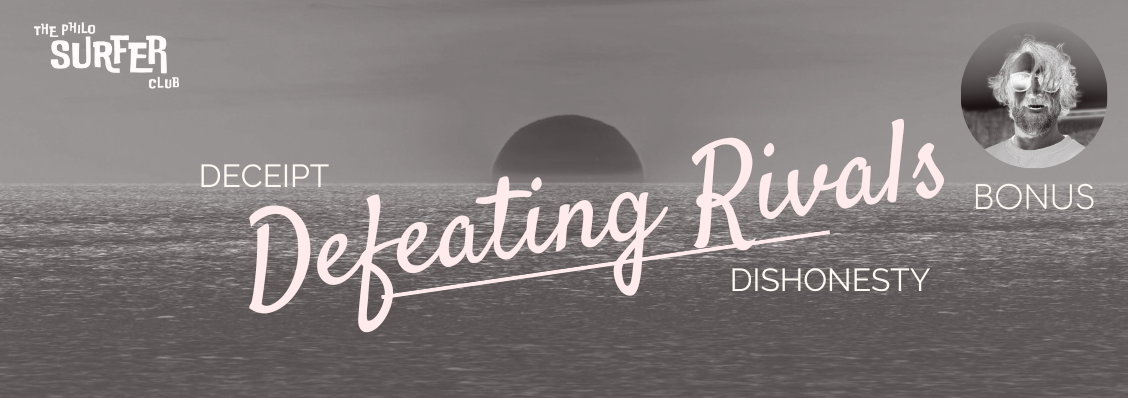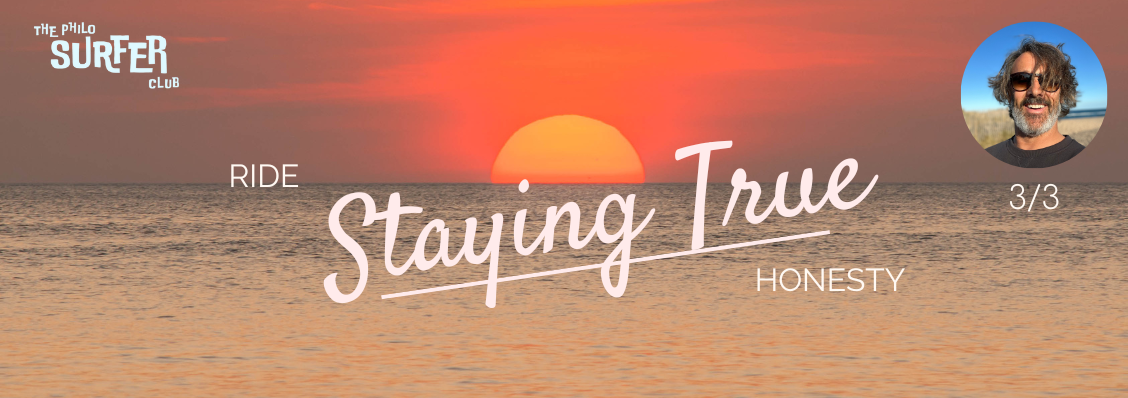Aloha, PhiloSurfer!
This week’s newsletter is a short & straightforward one.
Its only purpose is to make you reflect on the relation of opposites & the non-conventional view that Taoism holds about them.
Long story short, you can’t get one thing without the other – its opposite.
It’s like reeling in too hard from one side of the leash. You can easily get the opposite result that you’re looking for:
A board smashed in your face instead of getting back to the take-off zone faster.

Binary Either/Or’s
From a young age, we are told that the world is a structure of opposing forces.
The most common one:
Good/Bad
You’re a good boy/girl if you behave. The opposite if you don’t. Reinforced thousand times each day.
Things are either good or bad. Not both things at a time.
You are, accordingly, taught only to want things from the first category.
Simple. Right?

Philosophy Is Never A Simple Story
Not too long ago, I heard the author John Green on a podcast say:
“If someone tells a story too simple, that’s not the whole story.”
That resonated with me. We are exposed to way too many way-too-simple stories. Every single day.
And the whole idea about opposites is one of them.
- Longboard-Shortboard
- Simple-Complex
- Life-Death
- Firs-Last
That made me think of the philosopher most like a surfer:

Lao Tse (aka Lao-Tzu)
Lao-Tse wrote the
Daodejing (aka Tao Te Ching)
It’s the shortest, simplest life philosophy book ever written. Most surfers have adopted his teachings, either consciously or unconsciously.
His basic recommendation is to live in harmony with Nature.

Go with the flow. Accept the winds of change. Tap the source.
In one word:
Surf!
Chapter 2. The Opposites

Let me quote for you the whole of chapter 2 of the Tao Te Ching:
“Under Heaven all can see beauty as beauty only because there is ugliness.
All can know good as good only because there is evil.
- Difficult and easy complete each other;
- Long and short clarify each other;
- High and low rely on each other.
- Voice and sound harmonize each other;
- Front and back follow one another.
Therefore the wise goes about doing nothing, putting into practice no-word teachings
The ten thousand things rise and fall without cease,
Creating, yet not possessing,
Working, yet not taking credit,
Only they do not reside in their achievements.
Therefore it lasts forever”.
Short & easy, yeah?
Well, it is short, but by no means is it easy.
That’s the deal about true simplicity.
It seems easy, but only on the surface.

Hidden Gems
The hardest part of Taoism is interpreting the beautiful words that have traveled through history 2.5 millennia.
This is my one & only very personal try:
- Nothing is black or white, just like the Yin & Yang.
- Every act is composed of opposites.
- Every action creates a reaction.
- Excess produces an excessive reaction.
- Taking no action, not forcing the outcome, sometimes produces the desired action.
- If it’s meant to be – the process will develop harmoniously.
- It it’s not meant to be – no matter how hard you try, you’ll never get it.
(Feel free to disagree with me & reply to this email with your comments.)
Opposites Attraction
From this new perspective, oppositional forces can be used to our advantage.
Think about it.
- The bad contains seeds for the good.
- Our weaknesses can be our strengths.
- Boring is a necessary condition for fun (and creativity).
“Nature does not hurry, yet everything is accomplished.” – Lao-Tse
Embody simplicity, Nature does it.
TL;DR
Reconsider how opposites relate to one another since they are strongly, intimately & inevitably connected. Knowing this:
Instead of pushing too hard for one pole and forcing the contrary reaction, try living in harmony with the Universe.
May the swell be with you!
Mahalo,
Additional recommendations:
- “The Eternal Tao Te Ching” by Benjamin Hoff: This book is a modern translation and commentary on the ancient Tao Te Ching, a foundational text of Taoism. If you are interested in Taoist philosophy and reflections on life, this book might be worth exploring.
- “The Tao of Pooh” by Benjamin Hoff: A delightful book that uses characters and stories from A.A. Milne’s Winnie-the-Pooh to illustrate Taoist principles. It offers a playful and accessible way to learn about Taoism through familiar characters.
- “The Tao of Surfing” by Michael Allen: This book blends Taoist philosophy with the art of surfing. It provides insights into finding harmony with nature and oneself while enjoying the sport of surfing.
- “The Tao of Leadership” by John Heider: This book is about applying Taoist principles to leadership and management. It provides a unique perspective on effective and harmonious leadership.
- “The Tao of Allowing” by G.P. Walsh: This book focuses on the concept of allowing and surrendering to the flow of life, drawing from Taoist ideas. It is a guide to finding peace and balance in life through acceptance.
- “Tapping the Source” by Kem Nunn: This is a novel involving surfing and spiritual exploration. One of the characters is the typical surfer taoist. If you enjoy fiction (surf noir, coming of age) that incorporates some philosophical themes, this is a fascinating read.
- “Saltwater Buddha” by Jaimal Yogis: This book is a memoir that combines surfing with the author’s personal journey of self-discovery. It’s an inspiring and introspective read, especially if you’re interested in surfing, buddhism and personal reflections.

